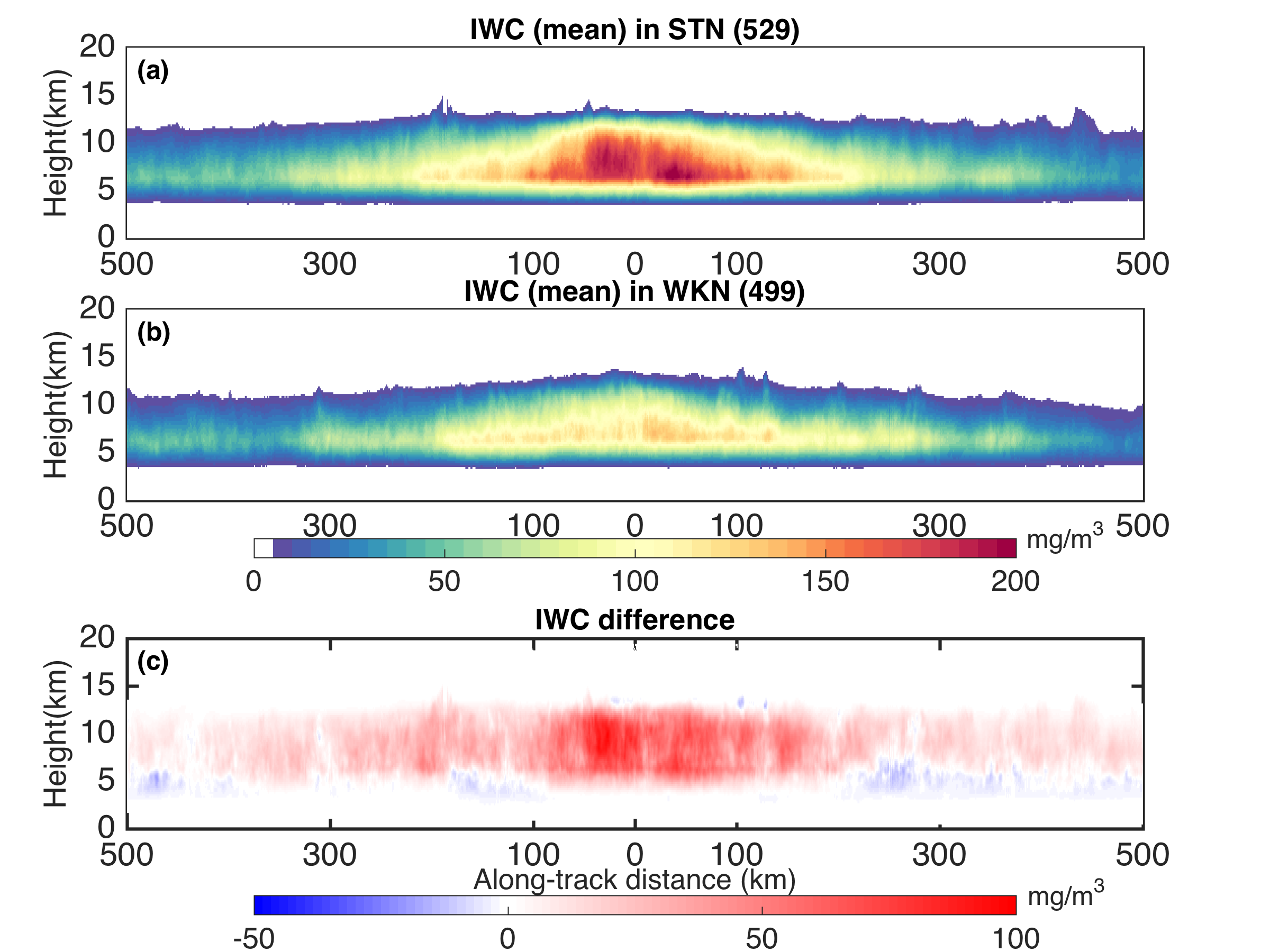Ice Cloud as a Precursor ofr Tropical Cyclone Intensification

Introduction
Cloud ice water content can serve as a proxy for latent heat release and predict future TC intensification.
Key Points
- More ice cloud in intensifying TCs
- The main differences concentrated within 100 km of the TC center
- The extensive elevated ice water content in intensifying TCs
Project Summary
Latent heating is traditionally considered the main energy source driving TC development. Knowing how much latent heating occurs in a TC can improve our ability to predict its behavior. However, directly measuring latent heating remains challenging. As a workaround, we can use the amount of ice cloud as a proxy for estimating latent heating.
Our results show that intensifying TCs have more cloud ice water content than weakening ones. Furthermore, TCs that intensify rapidly tend to have higher ice content than those that intensify more slowly. These findings emphasize the need to improve both our observation and modeling of ice clouds to enhance TC forecasts.
Publications about this research:
- Wu, S.-N., B. J. Soden, Y. Miyamoto, D. S. Nolan, and S. A. Buehler (2021): Using satellite observations to evaluate the relationships between ice condensate, latent heat release, and tropical cyclone intensification in a mesoscale model. Monthly Weather Review, 149 (1), 113 – 129. [link]
- Wu, S.-N., Soden, B. J., & Alaka, G. J.. (2020). Ice water content as a precursor to tropical cyclone rapid intensification. Geophysical Research Letters, 47. [link]
- Nolan, D. S., Y. Miyamoto, S.-N. Wu, and B. J. Soden (2019): On the correlation between total condensate and moist heating in tropical cyclones and applications for diagnosing intensity. Monthly Weather Review, 147 (10), 3759 – 3784. [link]
- Wu, S.-N., and B. J. Soden (2017): Signatures of tropical cyclone intensification in satellite measurements of ice and liquid water content. Monthly Weather Review, 145 (10), 4081 – 4091. [link]
- Wu, C.-C., S.-N. Wu, H.-H. Wei, and S. F. Abarca (2016): The role of convective heating in tropical cyclone eyewall ring evolution. Journal of the Atmospheric Sciences, 73 (1), 319 – 330. [link]